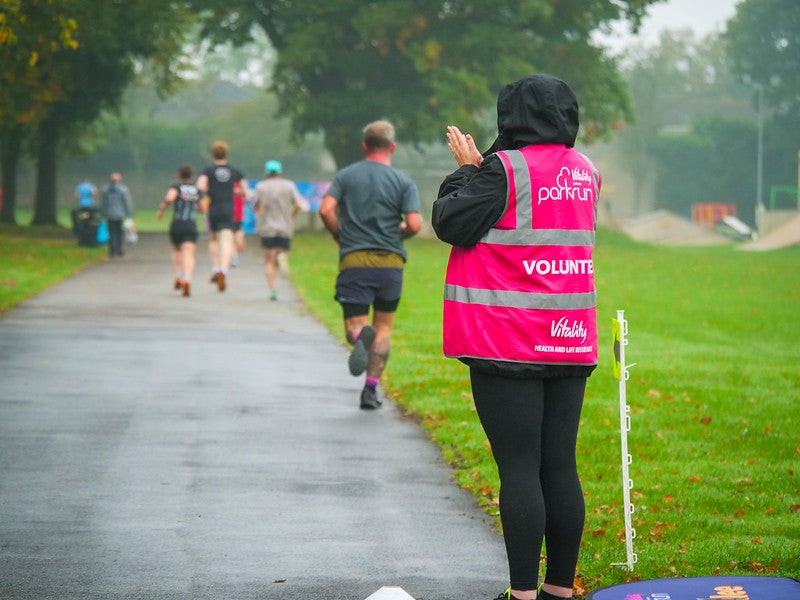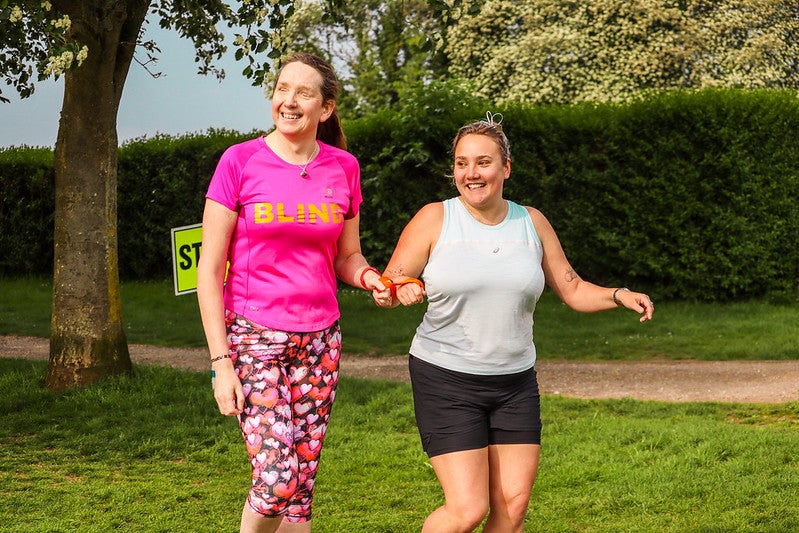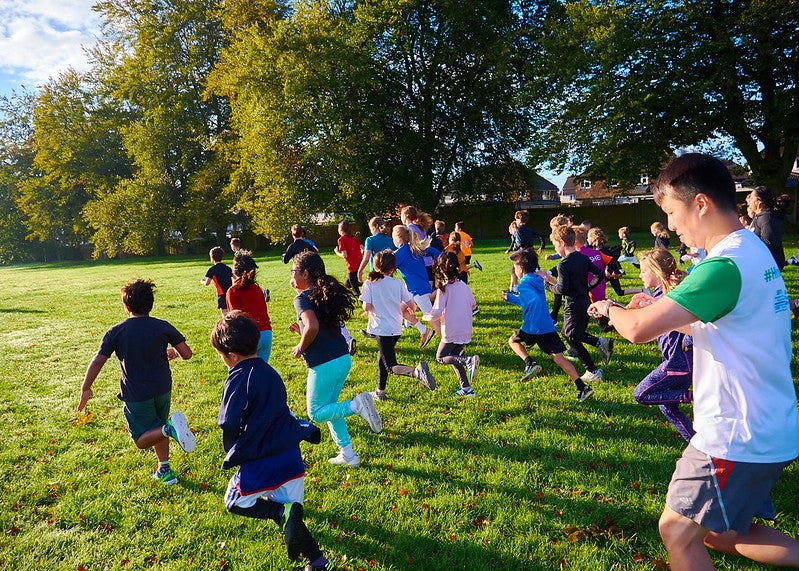‘Thank you, Marshal’: How parkrun became a global phenomenon
From humble beginnings in one west London park to thousands of destinations worldwide, the weekly 5km has attracted a millions-strong community of fiercely loyal runners and volunteers, and is even being prescribed by GPs to their patients. Helen Coffey charts the 20-year success story of running’s most inclusive event
Your support helps us to tell the story
From reproductive rights to climate change to Big Tech, The Independent is on the ground when the story is developing. Whether it's investigating the financials of Elon Musk's pro-Trump PAC or producing our latest documentary, 'The A Word', which shines a light on the American women fighting for reproductive rights, we know how important it is to parse out the facts from the messaging.
At such a critical moment in US history, we need reporters on the ground. Your donation allows us to keep sending journalists to speak to both sides of the story.
The Independent is trusted by Americans across the entire political spectrum. And unlike many other quality news outlets, we choose not to lock Americans out of our reporting and analysis with paywalls. We believe quality journalism should be available to everyone, paid for by those who can afford it.
Your support makes all the difference.It’s a cool, crisp day – cloudy yet bright enough that the path ahead beckons invitingly. As I stretch, my breath leaving foggy echoes hanging in the air, I look around in wonder to see hundreds of others doing the same. Some are bouncing from foot to foot in anticipation, some are stripping off layers in preparation, some are chatting while setting smartwatches beep-beep-beeping to record their progress. Volunteers in hi-vis stamp their feet to keep warm, smiling and waving at familiar faces in the crowd. It’s 9am on a Saturday morning, and that can only mean one thing to the dedicated, loyal pack that surrounds me: it’s parkrun time.
Little could the event’s founder, Paul Sinton-Hewitt, have envisaged that such a spectacle would be taking place at locations all over the country when he organised the first ever parkrun 20 years ago. Thirteen locals showed up for a casual 5km jog in Bushy Park, west London on that first Saturday morning, 2 October 2004. Two decades later, more than 10 million registered parkrunners have participated, with around 300,000 people taking part in more than 2,500 events across 23 countries every single week. The event has even had a mention on EastEnders, the real sign that something has become woven into the very fabric of British cultural life.
“You have to remember that there was no vision or plan to make it a movement,” says Sinton-Hewitt. “It was only ever supposed to be one event, and it was probably very, very selfish. I needed this.”
The driving force behind the initial idea was turmoil in his own life: difficult relationship issues and a complex work situation had collided to create a “downward spiral”. Historically, Sinton-Hewitt knew that running was one of the most powerfully effective tools, in terms of both problem-solving and getting his mental health back on track. But more than that, he was longing for connection.
“I had the strong urge to see my friends,” he says, “and I thought, ‘what can I do to make sure I see the people I really care about on a regular basis?’” What emerged was a 5km run at his local park, every Saturday morning, come rain or shine. Anyone was welcome, and it was completely free – two elements that remain integral to parkrun 20 years later.
Even if the motive started off as individualistic, Sinton-Hewitt was clearly not the only person who had a parkrun-shaped hole in his life. Word spread – slowly at first, then faster. Twenty people showed up on the first ever Christmas Day parkrun, 30 the following year, 75 the year after that…
Yet marketing was non-existent. “I wasn’t under any pressure to grow; keeping things economical, keeping them practical, for the first 10 or 15 years I made the decision that I wouldn’t do a single bit of advertising.”
It was clear that he was on to something “really, really good” when people kept coming back – and brought their friends and families with them. Within two years, it was so popular that Sinton-Hewitt was being urged to put on a second event in Wimbledon; the movement had officially begun.

One of the quirks of parkrun is that you’re given a physical barcode when you cross the finish line, which you queue up to have scanned alongside your own personal barcode in order to receive an official time and ranking. This, explains Sinton-Hewitt, is intentional. “I didn’t ever want a running event where you just pitched up and left,” he says. “We could have made the finishing aspect of parkrun automatic. We had the technology 20 years ago. But we made a conscious decision not to do that, because forming queues means you need to bunch up with people, get close, talk to them.”
This community aspect, fostered from the get-go, has remained a fundamental part of what makes parkrun something much more than a weekend jog. Even today, with thousands of weekly events, the whole thing is completely volunteer-run – only possible because people are willing to set up the course, time finishers, scan barcodes or simply cheer the runners on. The most common phrase you’ll hear around any parkrun course is “Thank you, Marshal,” as runners vocalise their appreciation for those who’ve facilitated this Saturday morning ritual.
The volunteering side of things has, for many, become more significant than the run itself. “The big part is being around other people and building communities and getting a sense of friendship,” Rory Marriott, a 56-year-old analyst who lives in Ipswich, tells me. He’s been a regular participant, as both a runner and a volunteer, for more than 13 years; in 2024, he hit a major milestone, having volunteered 1,000 times. He also helped set up Ipswich’s junior parkrun – another arm of the event that consists of a free weekly 2km course for four- to 14-year-olds, held on Sunday mornings.
You have to remember that there was no vision or plan to make it a movement
After Marriott was diagnosed with multiple sclerosis in 2014, parkrun became an even greater lifeline. “The mental stimulation and social interaction makes such a big difference. For me, I’m not as sporty and active as I used to be, but I’m still able to get to my parkrun every week and have that chat.” He sees it as “so much more than just a run. It’s a real way of life that’s so positive; I’d say it’s almost impossible to leave a parkrun and not be smiling for the rest of the day.”
Jane Thorogood, a 58-year-old retired teacher from Aberystwyth, Wales, found that “volunteering was more fun” than running: “I got to chat to people, see everybody else running.” Having completed 445 parkruns and volunteered 393 times over the past 12 years, she’s set herself the goal of achieving her 500th parkrun and 500th volunteer event in the next 18 months – both on the same day.
She would say that she’s got more back than she’s put in, though. When her husband had a life-altering stroke in 2021, it was the parkrun community that helped get the family through it. “The support is just unbelievable – when word got out, within 20 minutes we had two parkrunners at the door. It’s one great big family.”
Inclusivity is the cornerstone of parkrun, according to Sinton-Hewitt. “If we focus on anything, we focus on including everybody,” he says. “That’s probably our primary pillar: making sure that everybody can find a home, that they can feel safe, that they can get involved.”

He tells me the story of Elizabeth, an 80-year-old wheelchair user who was at risk of dementia. Her daughter, a regular parkrunner, introduced her mother to the Bushy Park event, where Elizabeth soon became a beloved member of the parkrun team: “Everybody got to know her – people high-fived as they went past her in her wheelchair with her little hi-vis jacket,” recalls Sinton-Hewitt.
Though it has the word “run” in the title, parkrun can be completed however you like – run it, walk it, or go around on a mobility scooter if that works best for you. The idea is to encourage people to get out and get moving, wherever they are on their fitness journey. And however you do it, you will never, ever be last: there is intentionally always a volunteer “tail walker” who is the final person over the finish line.
This guiding light of inclusivity has led to decisions that have hit headlines over the past year. In February, the charity decided to drop time records from its website in order not to deter new entrants who might think parkrun wasn’t for them. It wasn’t a huge change on the face of it – entrants continue to receive personalised results via email, while individual profile pages and event results pages have remained the same – but there was nevertheless a backlash from certain quarters of the running community.
And then there’s the culture wars’ biggest hot-button issue: parkrun has faced fierce criticism for allowing trans people to self-identify their gender, and been accused by some of “sex discrimination” against women after several female course records appeared to have been broken by transgender women.
The support is just unbelievable – it’s one great big family
Sinton-Hewitt doesn’t shy away from the difficulties of navigating these thorny issues. It’s “complex”, he says, “but in the end, I would say the primary reason that drives us is inclusivity, giving everybody the opportunity to be healthier and happier through activity in the outdoors and through communication and community.”
When he first created the reports in the early days, it was merely because he thought they were fun and interesting, encouraging a bit of discussion. Now, the whole game has changed. “Nobody is interested in the 17-minute club unless you’re in the 17-minute club, and that was such a small percentage of people – so why do we put it on our front page and throw it in everybody’s faces and make it look like this is what we’re about?” He adds that they “didn’t take a single piece of data away”; individuals can still access it should they choose to.
As for the transgender debate, Sinton-Hewitt says that, while he never wants to exclude anyone, he’s “troubled” by the idea of women feeling “undermined”. “I don’t know what the answer is,” he tells me, “But parkrun is absolutely not the Olympics. We should make it possible for everybody to participate in the best possible way. And one thing is for certain – parkrun will never, ever be able to check what you tell us your gender is when you register. There are 10 million people; we’re a very small organisation.”

For now, at least, he believes they’ve made the right decision. “Inclusivity comes first – and fairness, I’m afraid, is affected by the drive towards inclusivity.”
The social components, coupled with the physical and mental health benefits of weekly exercise, mean that parkrun is now even being prescribed by doctors. The 2,000th UK GP surgery is expected to sign up to the parkrun practice initiative this year.
One advocate is Dr Hussain Al-Zubaidi, a regular parkrunner and volunteer himself. He’s seen the very real difference the event has made to some of his patients’ lives – and not just regarding their physical health or fitness.
“I prescribe it for different people for different reasons,” he says. “One gentleman in his early fifties was really struggling with his mental health – he’d gone through a breakup and lost connection with his kids. He was low on confidence and felt isolated.” Dr Al-Zubaidi ascertained that what he needed to feel less anxious was a sense of community, to feel like he had a role to play. “We said, why not try volunteering at parkrun? And week after week of being in that atmosphere and having people chatting to him, people who wanted to speak to him, was the medicine he needed.” A year later, the change in him was so pronounced that he reconnected with his estranged daughter.
It can be a much better, longer-lasting prescription than antidepressants
“It’s like watching magic happen,” adds Dr Al-Zubaidi. “Not overnight, of course, but it can be a much better, longer-lasting prescription than antidepressants.”
With so many locations, parkrun tourism has become a thing, too – people try to go to a local parkrun event wherever they are in the world, or travel to specific destinations in order to complete one. Anna Hughes, director of charity Flight Free UK, recently finished the parkrun A-Z: she ticked off a parkrun starting with every letter of the alphabet, from Alexandra Park in Manchester to Zuiderpark in The Hague, the Netherlands, over the course of two years.
“I like doing a quirky challenge,” she tells me. “I became totally obsessed!”
“Obsessed” seems to sum up perfectly how most parkrunners feel about it. And though its founder had no idea what he was starting 20 years ago, these days Sinton-Hewitt dreams of nothing short of global domination: “Ideally, I would have it in every single park, in every single place in the world.”
Wherever a parkrun pops up next, you’ll be sure to hear some variation of those magic three words as you make your way around the course: “Thank you, Marshal.”

Join our commenting forum
Join thought-provoking conversations, follow other Independent readers and see their replies
Comments